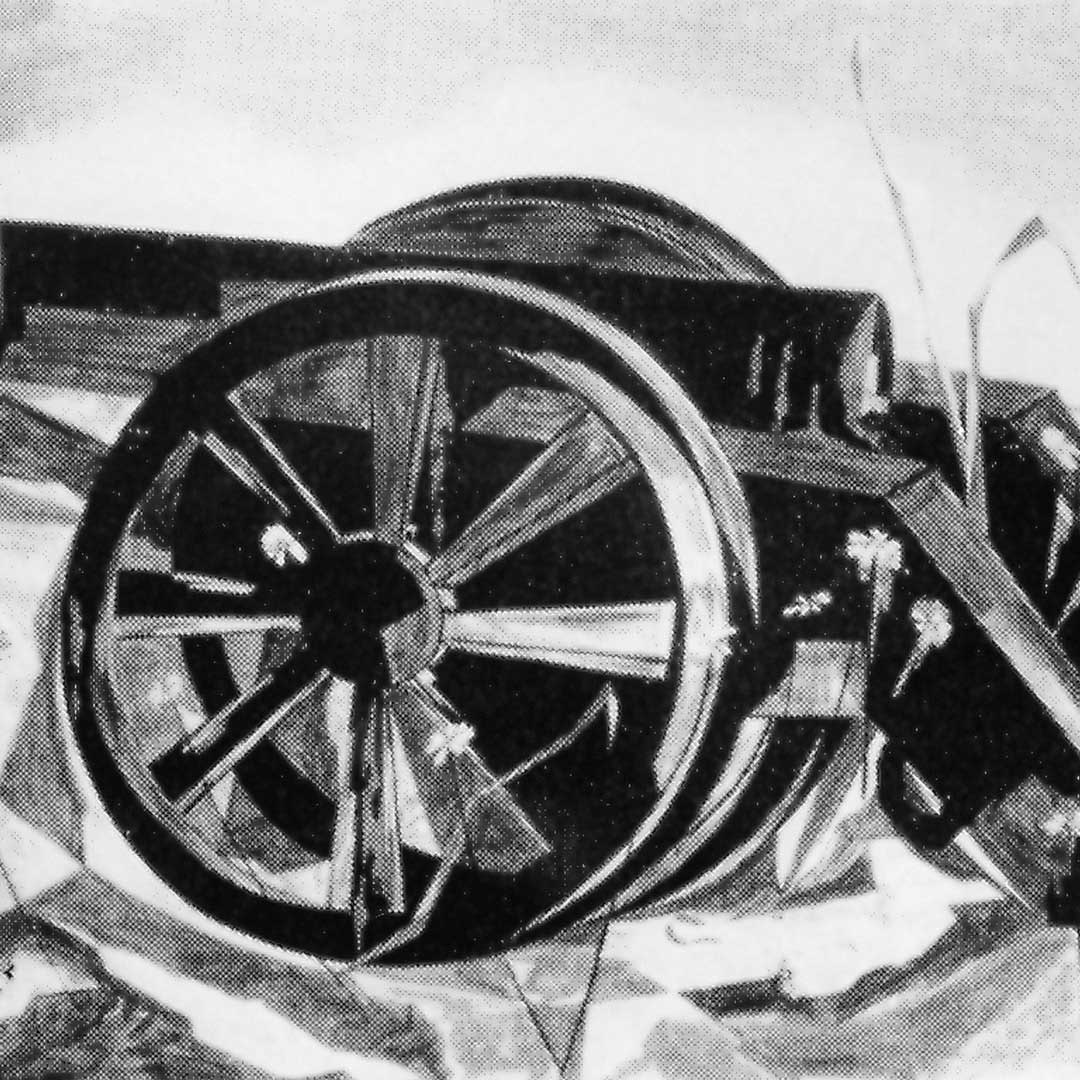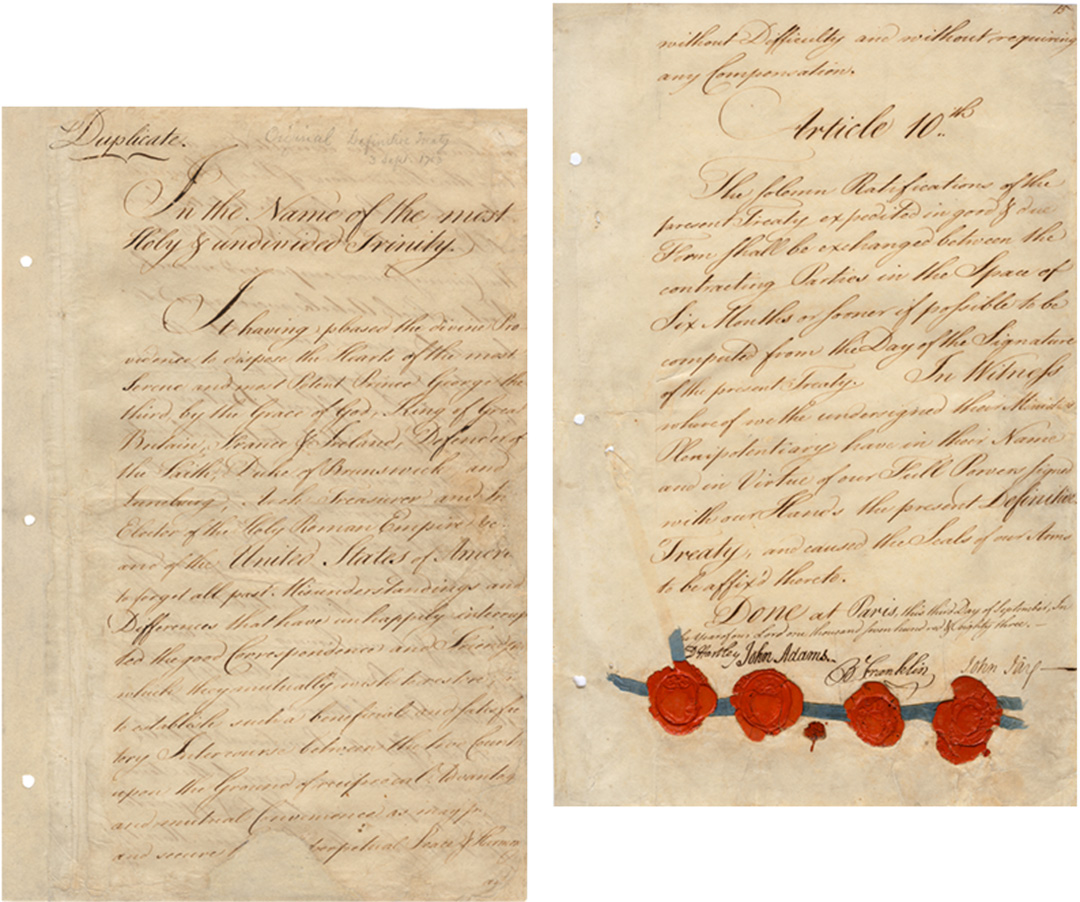Read Closer
Representatives of the American colonies and Great Britain signed the Treaty of Paris on September 3, 1783. The treaty effectively ended the American Revolution and formally recognized the United States as an independent nation. The lingering cannon in Lawrence’s painting shows the tenuous, only momentary peace and foreshadows the future maritime tensions that led to the War of 1812.
Excerpt from David Hartley, John Adams, Benjamin Franklin, and John Jay, Treaty of Paris, 1783, International Treaties and Related Records, 1778-1974, General Records of the United States Government, Record Group 11, National Archives
Article 7th:
There shall be a firm and perpetual Peace between his Britanic Majesty and the said States, and between the Subjects of the one and the Citizens of the other, wherefore all Hostilities both by Sea and Land shall from henceforth cease: All prisoners on both Sides shall be set at Liberty, and his Britanic Majesty shall with all convenient speed, and without causing any Destruction, or carrying away any Negroes or other Property of the American inhabitants, withdraw all his Armies, Garrisons & Fleets from the said United States, and from every Post, Place and Harbour within the same; leaving in all Fortifications, the American Artillery that may be therein: And shall also Order & cause all Archives, Records, Deeds & Papers belonging to any of the said States, or their Citizens, which in the Course of the War may have fallen into the hands of his Officers, to be forthwith restored and delivered to the proper States and Persons to whom they belong.
David Hartley, John Adams, Benjamin Franklin, and John Jay, Treaty of Paris, 1783, International Treaties and Related Records, 1778-1974, General Records of the United States Government, Record Group 11, National Archives

